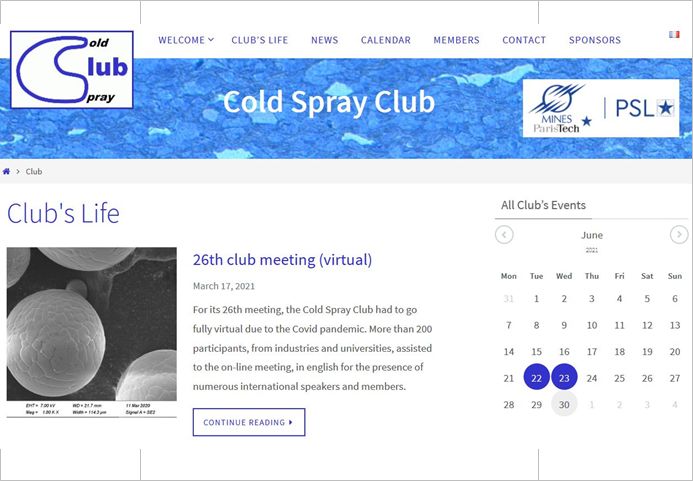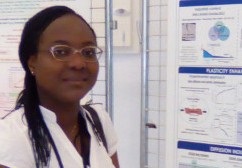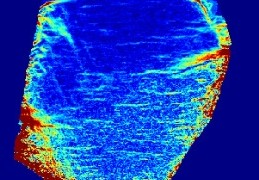



 Lecture
Lecture
Bio-based aerogels: new eco-friendly porous materials for thermal insulation and controlled release
| Area of expertise | Mechanics |
| Doctoral School | ISMME - Systems Engineering, Materials, Mechanics, Energy |
| Supervisor | M. Jacques BESSON |
| Research unit | Centre of materials |
| Starting date | October 1st 2025 |
| Keywords | LOCA transient, Zirconium alloys, Ballooning-burst, Failure, Numerical modeling |
| Abstract | Context: In the context of nuclear installation safety, several hypothetical scenarios are considered and classified into four classes based on the probability of occurrence and radiological consequences. Among them, the Loss-of-Coolant Accident (LOCA) is a class IV hypothetical scenario (probability of occurrence of the order of 10-4 to 10-6 per reactor per year) used notably for the design of emergency cooling systems (Design Basis Accident). This scenario is considered in the event of a failure of a branch of the primary circuit. This failure causes a drop in pressure in the primary circuit and a loss of water inventory in this circuit, resulting in heating of the fuel rods. The transient can then vary significantly depending on the location of the rupture, its size, or the reactor concerned (number of assemblies, number of cycles spent in the reactor, etc.). Following the appearance of the rupture, there is a depressurization and loss of water inventory in the primary circuit. Additionally, the residual water vaporizes due to the pressure drop and temperature increase. These factors lead to the lack of coolability of the core, initially ensured by the coolant fluid. To control this situation, several actions are taken, such as the drop of control rods that inhibit the nuclear fission reaction (the temperature increase also has an inhibitory role on the reaction) and finally the reflooding of the core via water injection by the safety systems at a later stage. The scenario is complex to analyze due to its hypothetical and random nature. During this hypothetical scenario, the fuel claddings that confine the nuclear fuel undergo significant constraints: thermal (rapid rise up to 1200°C), environmental (oxidizing atmosphere of water vapor), mechanical (pressure difference between the internal and external faces of the cladding). This thermomechanical loading can lead to the ballooning of the cladding until it bursts. The context of this work is part of the demonstration of the behavior of zirconium alloy cladding materials during hypothetical loss-of-coolant accidents (LOCA). Several parameters are involved in the ballooning and rupture of the cladding: hydriding, temperature, oxidation, pressure, loading history, etc. In a context of deepening knowledge, EDF is working on the mechanisms that lead to the initiation and development of ballooning and cladding rupture. The goal is to enhance, through this expertise, the calculation tools to simulate the ballooning and failure of the cladding. A significant scientific effort must be undertaken through this PhD work to develop a method to address, using proven numerical models, this issue of ductile deformation and failure occurring during the temperature ramp phase. The aim of this work is to develop advanced models to consider the parameters involved in ballooning-burst behavior (temperature, heating rate, axial and azimuthal temperature gradient, oxidation, hydrogen content, loading history, etc.). The proposed models will be fitted on an experimental data base established during the PhD program. |
| Profile | : Bac +5, Engineer or Master's degree with a specialization in Material Mechanics. The project involves a significant experimental part, so the candidate must demonstrate rigor, tenacity, and great autonomy. He/She must have an interest in experimental analysis and applied scientific research. The candidate must have knowledge in continuum mechanics, finite element methods, and experimental characterization means. Experience in conducting mechanical tests or performing finite element simulations will be appreciated. Furthermore, the candidate will be required to participate in international conferences to present the research results and write scientific articles, requiring good proficiency in English, both oral and written. The application file must include : - a detailed curriculum vitae; - a cover letter; - academic transcripts; - recommendation letters and the names, contact details of at least two people who can be contacted for a recommendation; should be sent by email to: Recrutement_these@mat.mines-paristech.fr |
| Funding | CIFRE ANRT |

A new version of the COLD SPRAY CLUB website is now…
The COLD SPRAY CLUB concerns laboratories, technology…
> En savoir +

Formation
A MINES ParisTech PhD student awarded at the…
Josiane Nguejio, PhD student at Centre des Matériaux…
> En savoir +

Recherche
The FEMS Lecturers 2014-2015 include Henry PROUDHON
Lecturer Series This is a scheme which sponsors selected…
> En savoir +

Recherche
award for a team of Centre des Matériaux
Nicolas Gueninchault who work in teams M2 and COCAS with Henry…
> En savoir +
Recherche
The SF2M award three medals to doctors of the centre des…
The medal Réaumur is given by SF2M, each two…
> En savoir +
